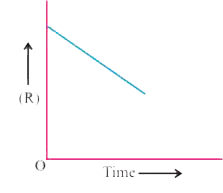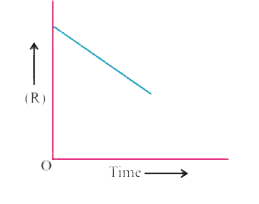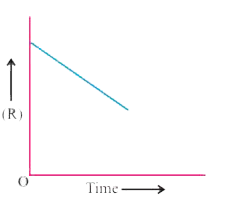Complete Solutions to SHORT ANSWER TYPE-II QUESTIONS of chapter CHEMICAL KINETICS of Class 12 book with complete answers and questions
| Class 12 | CHEMISTRY |
| Chapter | CHEMICAL KINETICS |
| SUPPORT MATERIAL | SHORT ANSWER TYPE-II QUESTIONS |
| Number Of Questions | 23 |
| Academic Year | 2023-24 |
The rate constant for first order reaction is 60/s. How much time will it take to reduce the concentration of the reaction to 1/10 of its initial value ?
02:20View SolutionThe rates of most reactions double when their temperature is raised from 298 K to 308 K. Calculate their activation energy.
04:14View SolutionA first order reaction takes 69.3 min for 50% completion. Set up on equation for determining the time needed for 80% completion.
03:20View SolutionThe activation energy of a reaction is 94.14 KJ/mol and the value of rate constant at `40^@ C` is `1.8 xx 10^(-1) sec^(-1)`. Calculate the frequency factor A.
05:09View SolutionThe rate constants of a reaction at 500 K and 700 K are `0.02s^(-1)` and `0.07s^(-1)` respectively. Calculate the values of `E_(a)` and A.
06:06View SolutionThe rate constants of a reaction at 700 K and 760 K are `0.011" M"^(-1)s^(-1)` and `0.105" M"^(-1)s^(-1)` respectively.
Calculate the values of Arrhenius parameters.03:56View SolutionThe initial concentration of `N_2O_5` in the first order reaction `N_2O_5 to 2NO_2 + 1//2O_2` was `1.24 xx10^(-2) "mol L"^(-1)` at 318 K. The concentration of `N_2O_5` after 60 minutes was `0.20 xx 10^(-2) "mol L"^(-1)`. Calculate the rate constant of the reaction at 318 K.
03:25View SolutionThe following data were obtained during the first order thermal decomposition of `N_2O_5` at constant volume :
`2N_2O_5 to 2N_2O_4 + O_2`

Calculate rate constant.04:33View SolutionA first order reaction is 20% complete in 20 minutes. Calculate the time taken for the reaction to go to 80% completion.
04:57View SolutionFor a first order reaction, calculate the ratio between the time taken to complete `3//4th` of the reaction and time to complete half of the reaction.
03:31View SolutionThe following results have been obtained during the kinetics studies of the reaction :
2A+B `to` C + D

Determine the rate law and the rate constant for the reaction.06:24View SolutionThe rate of reaction triples when the temperature changes from 293 K to 313 K. Calculate the energy of activation of the reaction assuming that it does not change with temperature.
03:38View SolutionThe decomposition of A into product has value of K as `4.5 xx 10^(3) sec^(-1)` at `10^@` C and energy of activation 60 kJ/mol. At what temperature would K be `1.5 xx 10^(4) "sec"^(-1)`.
03:52View SolutionWrite rate law and order of the following reaction :
`AB+C_2 to AB_2C+C` (slow)
`AB_2+C to AB_2C` (fast)01:27View SolutionDefine activation energy of a reaction.
01:46View SolutionWhat is the relation between rate constant and activation energy of a reaction?
02:41View SolutionFor a chemical reaction R `to` P, the variation in the concentration (R) vs time (t) plot is given :

Predict the order of reaction.03:08View SolutionFor a chemical reaction R `to` P, the variation in the concentration (R) vs time (t) plot is given :

Write down its rate law.03:19View SolutionFor a chemical reaction R `to` P, the variation in the concentration (R) vs time (t) plot is given :

What is the slope of the curve ?03:06View SolutionWhat do you understand by a first order reaction ? Show that for a first order reaction time required to complete a definite fraction of the reaction is independent of initial concentration.
04:23View SolutionIn a pseudo first order reaction of hydrolysis of an ester in `H_2O`, the following results were obtained :

Calculate the average rate of reaction between the time interval 30 to 60 sec.02:58View SolutionIn a pseudo first order reaction of hydrolysis of an ester in `H_2O`, the following results were obtained :

Calculate the pseudo first order rate constant for the hydrolysis of ester.04:02View SolutionThe decomposition of `NH_3` on platinum surface is a zero order reaction. What would be the rate of production of `N_2 and H_2` if `k=2.5xx10^(-4) "mol L"^(-1) s^(-1)` ?
03:11View Solution
SHORT ANSWER TYPE-II QUESTIONS questions and complete solutions for chapter CHEMICAL KINETICS of CBSE COMPLEMENTARY MATERIAL CHEMISTRY (HINGLISH) of Class 12
